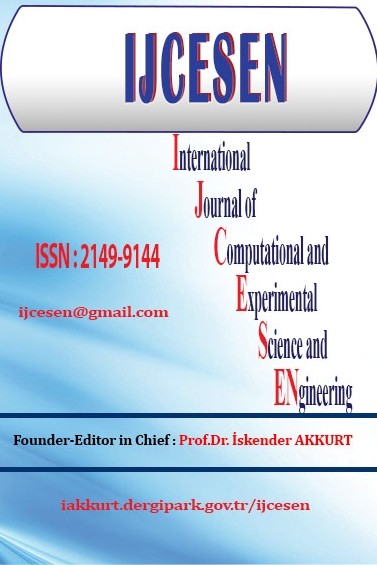Immunological parameters examination of the oral fluid in normal and pathological conditions: sensitivity analysis of microorganisms in modern therapeutic practice in vitro
Immunological parameters examination of the oral fluid in normal and pathological conditions: sensitivity analysis of microorganisms in modern therapeutic practice in vitro
Mucosal Immune Oral fluid, Immunological,
___
- [1] Mestecky, J., McGhee, J. R., Michalek, S. M., Arnold, R. R., Crago, S. S., & Babb, J. L. (1978). Concept of the local and common mucosal immune response. In Secretory immunity and infection (pp. 185-192). Springer, Boston, MA.
- [2] Mestecky, J. I. R. I., McGhee, J. R., Arnold, R. R., Michalek, S. M., Prince, S. J., & Babb, J. L. (1978). Selective induction of an immune response in human external secretions by ingestion of bacterial antigen. The Journal of clinical investigation, 61(3), 731-737.
- [3] Aps, J. K., & Martens, L. C. (2005). The physiology of saliva and transfer of drugs into saliva. Forensic science international, 150(2-3), 119-131.
- [4] Chiappin, S., Antonelli, G., Gatti, R., & Elio, F. (2007). Saliva specimen: a new laboratory tool for diagnostic and basic investigation. Clinica chimica acta, 383(1-2), 30-40.
- [5] Wu, Z., Lee, S., Abrams, W., Weissman, D., & Malamud, D. (2006). The N-terminal SRCR-SID domain of gp-340 interacts with HIV type 1 gp120 sequences and inhibits viral infection. AIDS Research & Human Retroviruses, 22(6), 508-515.
- [6] Stoddard, E., Cannon, G., Ni, H., Karikó, K., Capodici, J., Malamud, D., & Weissman, D. (2007). gp340 expressed on human genital epithelia binds HIV-1 envelope protein and facilitates viral transmission. The Journal of Immunology, 179(5), 3126-3132.
- [7] Mandel, I. D. (1990). The diagnostic uses of saliva. Journal of Oral Pathology & Medicine, 19(3), 119-125.
- [8] Streckfus, C. F., & Bigler, L. R. (2002). Saliva as a diagnostic fluid. Oral diseases, 8(2), 69-76.
- [9] Nagler, R. M., Salameh, F., Reznick, A. Z., Livshits, V., & Nahir, A. M. (2003). Salivary gland involvement in rheumatoid arthritis and its relationship to induced oxidative stress. Rheumatology, 42(10), 1234-1241.
- [10] Humphrey, S. P., & Williamson, R. T. (2001). A review of saliva: normal composition, flow, and function. The Journal of prosthetic dentistry, 85(2), 162-169.
- [11] Saloom, H. F., & Carpenter, G. H. (2018). Saliva and Gingival Crevicular Fluid: Contributions to Mucosal Defense. In Oral Mucosa in Health and Disease (pp. 91-103). Springer, Cham.
- Yayın Aralığı: 4
- Başlangıç: 2015
- Yayıncı: Prof.Dr. İskender Akkurt
Aybike URAL, Zeynep Hilal KİLİMCİ
Effect of Rosuvastatin on Fasting and Postprandial Lipid Profile in Hypertriglyceridemia Patients
Abdulrazaq Mohammad SABAH, Ikonnikova NATALIYA
Design and Manufacture of a Centrifugal Water Pump with a Circular Casing
Francis INEGBEDİON, Chidiebele Nnadike OKONKWO, Joseph Okechukwu NDIFE
Modeling of global solar radiation in Algeria based on geographical and all climatic parameters
Ahmed ZARKOOSHİ, Kamal Hussein LATIF, Fadhil HAWI
Abdulrazaq Mohammad SABAH, Ikonnikova NATALIYA
Modeling of the Magnetic Field of Current Carrying Conductor with Finite Elements Method
Hajrudin HUSEJNİ, Naim SYLA, Gazmend NAFEZİ, Fisnik ALİAJ
Fast Neutrons Shielding Properties for HAP-Fe2O3 Composite Materials
Roya BOODAGHİ MALİDARRE, İskender AKKURT, Kadir GUNOGLU, Hakan AKYILDIRIM
